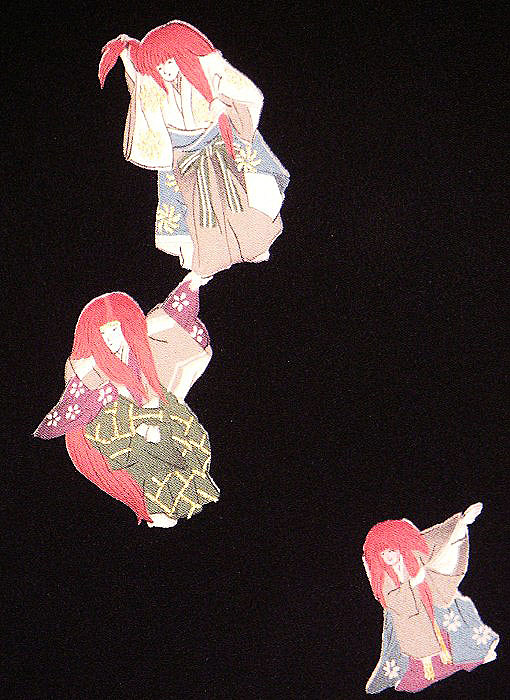Description
This elegant, fully lined, hand woven, Chirimen Silk Haori (overcoat) is a three quarters length, open overcoat which gives the effect of being a short Kimono. Chirimen is a crepe-like weaving of silk that illustrates a technique that has been lost to the Japanese for over 100 years. Ordinarily, Haori are intended to be worn over the man’s kimono making his outfit very formal. However, in this case, there are no Mon or family crests on the outside of the garment while the design also appears on the outside of the overcoat, indicating that this very fine garment was intended to be worn in the home, informally. Although these garments served a practical use as overcoats for the original owners, it was the art that made the Haori a family heirloom: the hand dyeing, hand weaving and hand painting of the design in this Silk made this a unique and impossible to duplicate garment.
A very urbane individual would have worn this Haori, as the design incorporates actors from the Noh Theatre. This Theatre was considered too sophisticated for the working classes, and was supported by the nobility. Noh actors, as a design, would only have been commissioned by a well educated, wealthy and high born Japanese man. It is also possible that the individual who commissioned this garment was the sponsor of the Noh Actor pictured here, as only those sponsors were allowed to wear the image of the actor whom they sponsored.
The beautifully detailed actors, renowned for their elaborate and stunning costumes, appear to be randomly scattered over the whole garment. This incredible design has been hand painted, using natural dyes, in the labor-intensive “Yuzen Rice Paste Resist” technique that is characterized by the fine white lines that remain around the design. The subtle art of Yuzen dyeing was developed around 1700 in response to the demand for extravagant dress in Japan. The Free Hand Paste Resist process was a very tedious process with many steps, allowing the various colors to be applied by hand with a brush to the areas of the design, with the dry paste keeping the dye inside its borders. The Silk is then steamed to set the dye, the paste is removed by rinsing, and the delicate white lines that outline the colorful motifs appear. The finer the quality of the painting, the more skill was required of the artist.
This stunning Haori ranks as a couture garment and, by wearing it only in the home, illustrates how selective the Japanese are with regard to whom they would allow to witness their wealth and status.
A Certificate of Authenticity is included.
TTAC will personally pack and ship via UPS at company expense within the continental U.S.










